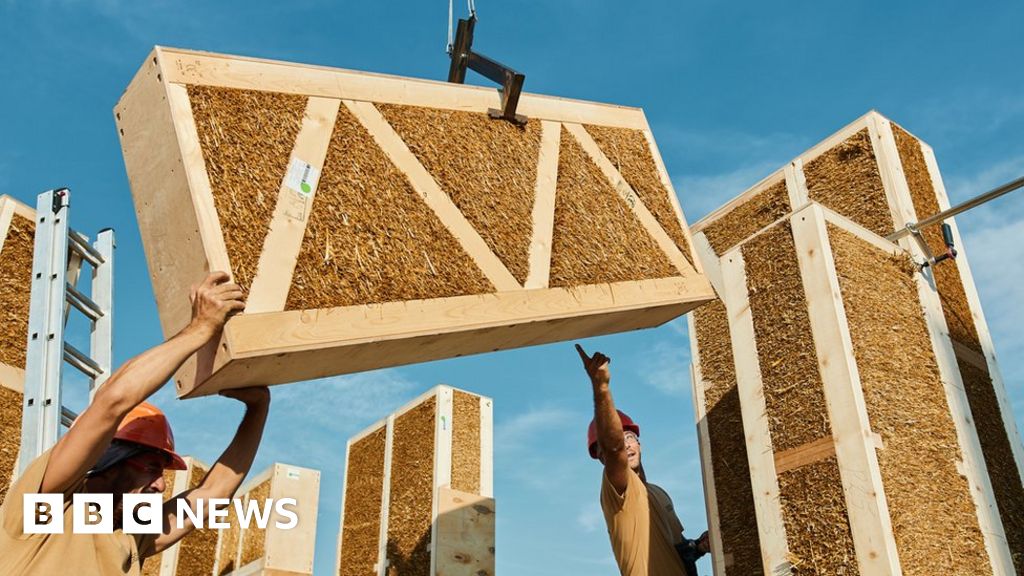This didn’t seem quite serious enough for UK, but it’s kinda neat.
Big Bad Wolf could not be reached for comment.
And as Insulation seems to have become my Special Interest at the moment, I dug into the material a little more.
It’s supposed to be installed 400mm thick.
It has a transmission value of 0.12WMK.
So 400mm on the outside of the house is equivalent to…150mm of glassfibre or 75mm of cellotex.
As it’s vapor permeable, it shouldn’t have any of the damp issues poorly installed insulation suffers from.
So, if you can get away with the look, and have the space outside, it’s a pretty cool (/warm) material.



Hmm interesting. Is the straw compressed?
I wonder if you could encapsulate straw with fiber reinforced plastic. That would make it properly watertight for a tiny house. You could even vacuum seal it or replace the air with an insulating gas / CO2. And theoretically the straw could then work as something a bit like a core material. Something like 1mm fiberglass is only like 5€/m² so a combination of those two could make for one of the cheapest building material. Ideally you’d use basalt instead of fiberglass and a more eco friendly resin, but the encapsulated energy for a tiny house is so little it doesn’t matter than much.
The problem with encapsulation is that it’s never perfect. Look how many boats have rotten decks (all of them, eventually) and realize a house is way harder to do compared to a relatively simple boat. I live in a town where the climate will make mold grow on the north side of anything you set down for 5 minutes. I’d rather have no insulation at all than a biohazard in a box.
Hmm good point about encapsulation. But how is a house harder to encapsulate than a boat? I mean assuming the roof properly protects against rain, you have much less splash, the air humidity is generally lower and it’s not corrosive saltwater.
A boat you can take out of water and dry dock, seeing, analyzing, and fixing every interior and exterior surface. A house you cannot dry dock and check the exterior of the foundation under the soil.
Also, boats are made in a mould in a factory. Much smaller, many less nooks and crannies.
The move nowadays is towards natural materials that breathe (exchange water vapor), but do not pass liquid water between layers.
It’s a delicate balance to hit, and as soon as mineral fibres get involved, the breathability becomes trickier.
I’d really prefer something fully sealed for that reason. No “delicate balance” or the need for clever wall design. Just water and air proof. But straw is probably the wrong material for this. I was imagining something simple like a quonset hut. Easy to make forms for it.
The trouble with fully sealed, is when it suddenly isn’t, but it’s not noticed. Because then you end up with moisture building up with nowhere to go.
There are definitely two paths, perfect seal, and managed permeability, and they both have their benefits.